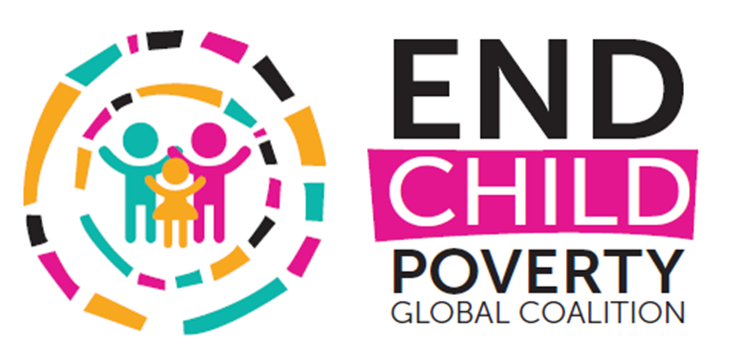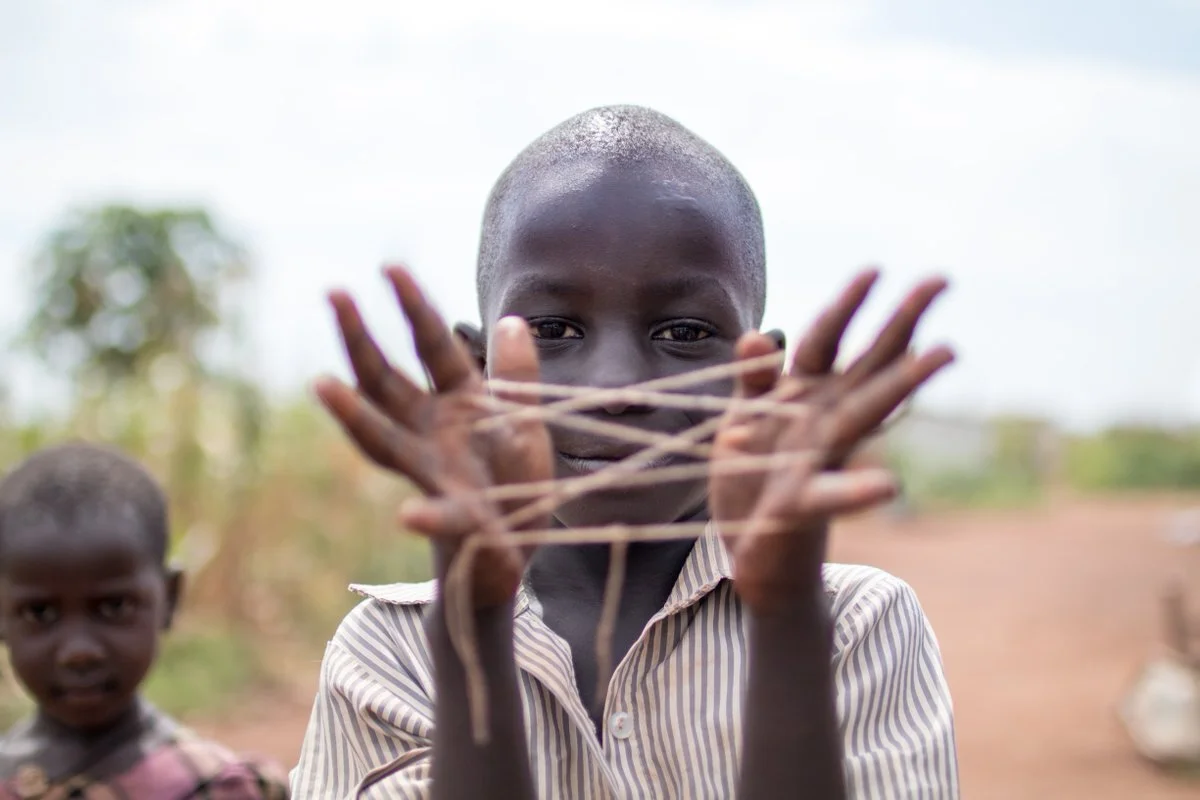by Julia Karpati, Chris de Neubourg, Erëblina Elezaj
The COVID-19 pandemic is projected to have acute and lasting effects at the economic, societal, community and household levels, on a global scale. The effects of the virus have both highlighted and exacerbated existing vulnerabilities in all societies, especially among children. While early evidence for high-income countries suggests that children are not among the primary risks groups of the direct health effects of the virus, the extent of direct and indirect effects of the pandemic on children remain largely unknown.
Our wide body of research in the field of child well-being, rights-fulfilment, and multidimensional child poverty and deprivations, suggests there are both severe vulnerabilities children are or may be facing in the COVID-19 pandemic, as well as major gaps in research on this topic.
What are the direct and indirect risks of COVID-19 to children who are already living in sub-optimal conditions, suffering from poverty and deprivations?
What is the likelihood that children will become poor and deprived as a result of the social and economic impact of the virus?
What are the potential long-term effects on children’s rights and wellbeing – which groups (such as displaced children, children with disabilities) are least likely to recover from the socioeconomic shocks of the virus, and what can we do to mitigate these effects?
Existing research on children’s wellbeing highlights dire risks to children in light of the pandemic:
Health and Survival of Children and their caretakers
Children in already precarious conditions face a greater risk of morbidity and mortality due to COVID-19. The scale and severity of the direct health impact of the coronavirus on children is still a topic of debate, and research is ongoing. Children may be infected by the virus at roughly the same rate as adults, although they appear to have developed much lighter, and much less fatal symptoms. However, little is known of the risk to children who have pre-existing poor health conditions, such as those suffering from respiratory disease, chronic illnesses, malnutrition, stunting, malaria, and/or HIV/AIDS. Moreover, the health status and survival of these children is also subject to their access to and utilization of high-quality health care services in the event of infection. Already, we know that:
In Sub-Saharan Africa under-5 mortality remains at an alarming 78 per 1,000 live births due to poor living conditions and access to essential goods and services.
In Sub-Saharan Africa 40% of children are not fully immunised against preventable diseases.
Globally, 40% of children under five with symptoms of pneumonia are not taken to
an appropriate health provider.
How will the health and survival of children be impacted in already sub-optimal health conditions?
Even if children are not the primary risk groups for the direct health effects of COVID-19, they remain vulnerable, and more research is needed to understand whether they are at greater risk if they have existing health vulnerabilities. Especially in low-resource settings such as urban slums and remote rural areas, the health and survival of children’s caretakers are at a great risk.
Health systems
In both low- and high-income countries, children bear the brunt of all disruptions to social and service systems, networks, instabilities and economic losses that affect their households and communities.
With health systems overloaded, crowding out essential services for children and their caretakers, children are at risk of losing access to critical health interventions, including immunization services and treatment for acute and chronic illness and malnutrition. Our research on multidimensional children’s deprivations in Western and Central African region shows that in the majority of countries, more than 1 in 2 children are deprived of access to essential healthcare services.
In the absence of universal health insurance and high-quality services, affordability will prevent access to life-saving healthcare treatment for COVID-19. Children who already have poor access to healthcare services may see their access further compromised.
There is also a risk to survival of children in communities who refuse access to healthcare services in favour of alternative, unsanctioned, traditional healing practices. In the long-term, availability of healthcare services may be compromised due to reduced medical staff who face a greater risk of morbidity and mortality.
Nutrition
The economic effects of the COVID-19 pandemic threaten food security and to worsen existing poor nutrition among children.
Shocks to household income as a result of economic instability and measures to prevent the spread of the virus can lead to or worsen existing food insecurity, causing or worsening malnutrition and stunting. Closure of schools and care centres will lead to the loss of regular and nutritious school meals [1]. For many children these are the only reliable sources of nutritious meals they receive.
Already prior to the pandemic, on average, 59% of children under age 5 years in Western and Central Africa were deprived of adequate dietary diversity and frequency. Children fare worse in rural areas.
Education
Closure of schools means that educational access, quality, and retention are disrupted, especially for children in low-resource settings.
Already, many children suffer from poor access to high-quality education. Children who lack access to distance learning materials and a quiet and safe space to study are likely to see negative outcomes in their learning, falling further behind in school.
More than 25% of school-age children in Kenya and 38% of children in Ethiopia live in households that do not have access to information devices (TV, radio and mobile phones). Around 36% of children in Ghana live in overcrowded dwellings with 4 or more persons per sleeping room.
Economic shocks to the household may also increase pressure on children to substitute labour for learning, and many may not return to school once they reopen after an extended period of closure. This may be especially true for adolescent children who enter the labour market as a coping strategy.
Already, we know that 1 in 4 children in Cambodia are two or more years behind in school. 1 in 2 school-age children in Senegal are not attending school.
Will the socioeconomic impact of the pandemic undo and hamper progress made in improving access to and quality of education for children, especially those living in low-resource settings?
Research is necessary to estimate the extent to which educational progress and opportunities will be impacted by the effects of the virus and coping strategies. How will school closures affect differences in educational access and outcomes between girls and boys? Children of disadvantaged groups?
Water, Sanitation and Hygiene
Access to clean water, soap and a place of handwashing is critical for containing the spread of COVID-19, along with other communicable diseases. What happens to children’s survival in absence of these, in the context of the pandemic?
Poor WASH conditions increase the risk of children’s exposure to life-threatening diseases and poor health outcomes. Absence of soap and water and a place of handwashing, in combination with poor hygiene practices, enables both infection and spread of the virus. These lead to increased risk of infection, altogether amplifying the threat to child morbidity and mortality.
In Ghana, around half of all children still do not have access to safe water, and millions drink untreated and potentially contaminated water that can give rise to diarrhoea, and cholera.
1 in every 3 children under 5 years in Lao PDR does not have access to a safe drinking water source. 1 in 2 do not have access to clean water and soap at a place of handwashing.
There are also risks to Increased risk of infection and contagion spread as a result of shared sanitation facilities. Children who are deprived of access to water due to distance to the source at a greater risk in two aspects: (1) Taking over the burden of fetching water (especially girls) and less time for learning and play, and (2) Increased risk to physical security on the road to fetching water.
Housing
Physical or social distancing policies have mandated households to stay at home to mitigate the contagion and spread of the virus. How feasible and effective are policies such as these for children and their caretakers who live in overcrowded housing and overcrowded neighbourhoods or communities such as camps or urban slums? How effective and cognisant are these measures for children and individuals living in refugee camps, and other precarious housing conditions? In a refugee camp in Germany, half of its 600 inhabitants have tested positive for the virus. In Zambia, 45% of children under age 5 years live in precarious and overcrowded housing conditions.
Child Protection
Containment strategies and household coping strategies may inadvertently increase the risk of children’s exposure to unsafe living conditions and exploitation.
“Social distancing”, or physical distancing, is among the broadly implemented policy measures for containing the spread of the COVID-19 pandemic. This is not an option for many children who live in overcrowded communities and housing conditions, in addition to increasing risk of abuse for children living in vulnerable conditions. Based on recent data, half of children age 12-17 years in Ghana are at risk of violent discipline in the household.
There is a risk of protection violations (exploitation, abuse) due to loss of alternative income-generating activities in the household, as a result of economic shocks. Financial shocks to the household risk children being exploited economically or girls being married as a negative coping strategy.
Unforeseen decline in skilled delivery at health facilities and/or social distancing may lead to a short and long-term decline in birth registration. This may be particularly problematic for contexts where birth registration is a precondition for access to public services and transfers.
Trauma & Stigma
The mental health burden of witnessing families and community members in anxiety over the pandemic, being separated from and losing loved ones to illness, or disruption of social and support networks from physical distancing policies, is often overlooked. Especially for children, these are traumatic experiences, the effects of which may manifest in the long term and far beyond the eventual end of the pandemic. To better understand and mitigate these effects, critical questions need to be answered through research:
What is the impact of the pandemic on the mental health and wellbeing of children? Are children at greater risk of anxiety, depression, and trauma as a result of the direct and indirect effects of the pandemic?
What are the long-term effects of trauma at the community level on the well-being of children?
Experience from the Ebola and HIV/AIDS pandemics suggest that social stigma related to the widespread illness is among the most adverse direct and indirect impacts on children and their caretakers, amplifying existing social tensions, insecurities and rights violations. The social exclusion of stigmatized individuals inhibits societal economic recovery by hindering access of affected individuals to basic services such as healthcare and education, increases risks of protection violations, and worsens the economic and social vulnerability of the individual.
Conclusion
As the Social Policy Research Institute, and as members of the Global Coalition to End Child Poverty our mission remains to make use of evidence and critical analysis to assist governments and institutions in safeguarding the human rights and dignity of all, especially society’s most vulnerable groups. This mission feels particularly relevant in the current moment, and we are currently committing our maximum resources to devising research and data collection strategies to meet the growing information gaps on the effect of the pandemic on children.
—————
Footnotes:
[1] See:
Bundy, Donald A. P. (2009): Rethinking school feeding. Social safety nets, child development, and the education sector / authors, Donald Bundy … [et al.]. Washington, DC: World Bank (Directions in development. Human development).
Domina, Thurston (2020): America’s poorest children won’t get nutritious meals with school cafeterias closed due to the coronavirus. Edited by The Conversation. (https://theconversation.com/americas-poorest-children-wont-get-nutritious-meals-with-school-cafeterias-closed-due-to-the-coronavirus-133341)
Whittaker, Lana (2020): Coronavirus: school closures mean an increased risk of hunger for families around the world. (https://theconversation.com/coronavirus-school-closures-mean-an-increased-risk-of-hunger-for-families-around-the-world-133969)


